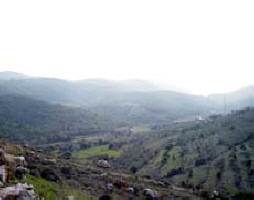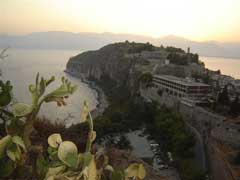 Waste Management in Morocco
Waste Management in Morocco
olid waste management is one of the major environmental problems threatening the Mediterranean Kingdom of Morocco. More than 5 million tons of solid waste is generated across the country with annual waste generation growth rate touching 3 percent. The proper disposal of municipal solid waste in Morocco is exemplified by major deficiencies such as lack of proper infrastructure and suitable funding in areas outside of major cities.
According to the World Bank, it was reported that before a recent reform in 2008 “only 70 percent of urban MSW was collected and less than 10 percent of collected waste was being disposed of in an environmentally and socially acceptable manner. There were 300 uncontrolled dumpsites, and about 3,500 waste-pickers, of which 10 percent were children, were living on and around these open dumpsites.”
The Menace of Trash Burning
It is not uncommon to see trash burning as a means of solid waste disposal in Morocco. Currently, the municipal waste stream is disposed of in a reckless and unsustainable manner which has major effects on public health and the environment. The lack of waste management infrastructure leads to burning of trash as a form of inexpensive waste disposal. Unfortunately, the major health effects of burning trash are either widely unknown or grossly under-estimated to the vast majority of the population in Morocco.
Burning of trash is a particular health concern because of the substantial amount of dioxins it produces. A dioxin is a highly toxic environmental pollutant that is released when household waste is burned. Most of the dioxins that are released into the air during the burning process end up on the leaves of green vegetation. These plants are then eaten by dairy animals such as cows,sheep and goats which results in the dioxins being stored and accumulating in the animal’s fatty tissues. Once this occurs, dioxins are difficult to avoid and people are exposed to them primarily by eating meat and other dairy products, especially those high in fat.
Furthermore, this type of open burning also causes particle pollution. Particle pollution refers to microscopic particles that end up in the lungs and cause enormous amounts of human health problems, such as asthma and bronchitis. Unfortunately, children and the elderly who are exposed to dioxins are among the highest at risk for contracting these illnesses. Other harmful carcinogens like polycyclic aromatic hydrocarbons, polychlorinated biphenyls (PCBs), volatile organic compounds (VOCs), and hexachlorobenzene (HCB) are consequences of outdoor burning. These pollutants have been known to cause numerous amounts of health problems ranging from skin irritation to liver and kidney damage and even in some more serious cases have been linked to cancer.
The ash itself that is produced when trash is burned often contains mercury, lead, chromium, and arsenic. “Garden vegetables can absorb and accumulate these metals, which can make them dangerous to eat. Children playing in the yard or garden can incidentally ingest soil containing these metals. Also, rain can wash the ash into groundwater and surface water, contaminating drinking water and food.” This is not even mentioning the population of garbage-pickers who are putting their health on the line while sorting municipal wastes.
Silver Lining
The good news about the future of Morocco’s MSW management is that the World Bank has allocated $271.3 million to the Moroccan government to develop a municipal waste management plan. The plan’s details include restoring around 80 landfill sites, improving trash pickup services, and increasing recycling by 20%, all by the year 2020. While this reform is expected to do wonders for the urban population one can only hope the benefits of this reform trickle down to the 43% of the Moroccan population living in rural areas, like those who are living in my village.
Needless to say, even with Morocco’s movement toward a safer and more environmentally friendly MSW management system there is still an enormous population of people including children and the elderly who this reform will overlook. Until more is done, including funding initiatives and an increase in education, these people will continue to be exposed to hazardous living conditions because of unsuitable funding, infrastructure and education.
References
The World Factbook Africa: Morocco. (2013, 8/22/2013). The World Factbook. Retrieved 11/02/2013, from https://www.cia.gov/library/publications/the-world-factbook/geos/mo.html
Morocco: Municipal Solid Waste Sector. (2013). Retrieved 11/01/2013, 2013, from http://goo.gl/k91kry
Wastes – Non-Hazardous Waste – Municipal Solid Waste. (2012, 11/15/2012). Retrieved 10/31/2013, fromhttp://www.epa.gov/osw/nonhaz/municipal/backyard/health.htm
| Contact information |
Salman Zafar, Ecomena
|
|---|---|
| News type | Inbrief |
| File link |
http://www.ecomena.org/waste-management-morocco/ |
| Source of information | EcoMENA - By Catherine Hansen |
| Keyword(s) | MED-3R, waste, Waste Management, solid waste management |
| Subject(s) | ANALYSIS AND TESTS , CHARACTERISTICAL PARAMETERS OF WATERS AND SLUDGES , ENERGY , FINANCE-ECONOMY , HEALTH - HYGIENE - PATHOGENIC MICROORGANISM , INDUSTRY , INFRASTRUCTURES , MEASUREMENTS AND INSTRUMENTATION , METHTODOLOGY - STATISTICS - DECISION AID , NATURAL MEDIUM , PREVENTION AND NUISANCES POLLUTION , RISKS AND CLIMATOLOGY , SLUDGES , TOURISM - SPORT - HOBBIES , WATER QUALITY |
| Relation | http://www.semide.net/countries/fol749974/country154256 |
| Geographical coverage | Morocco |
| News date | 05/11/2013 |
| Working language(s) | ENGLISH |
 you are not logged in
you are not logged in





